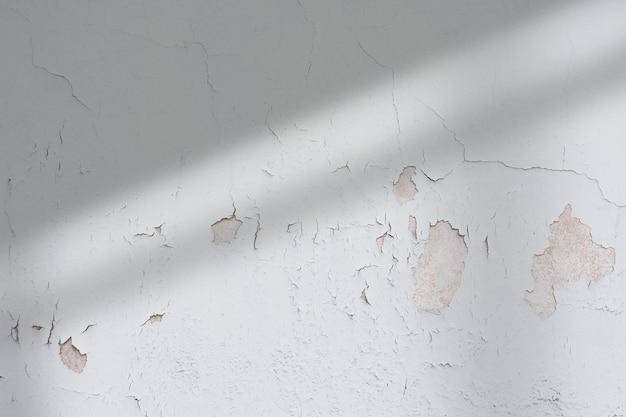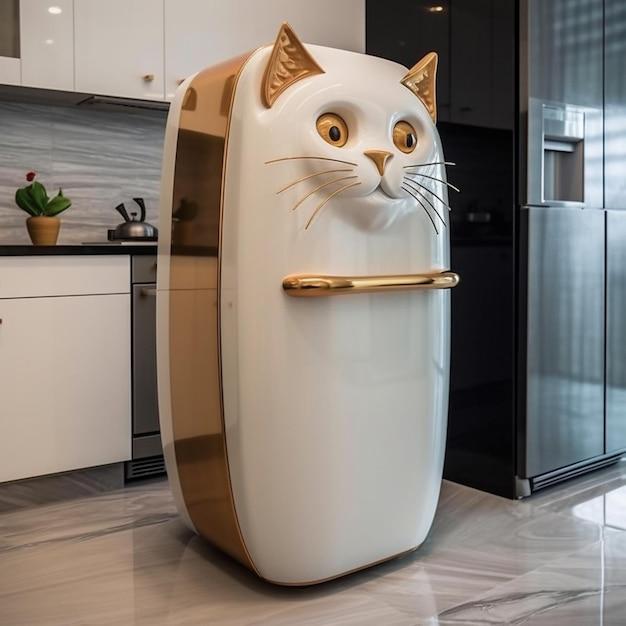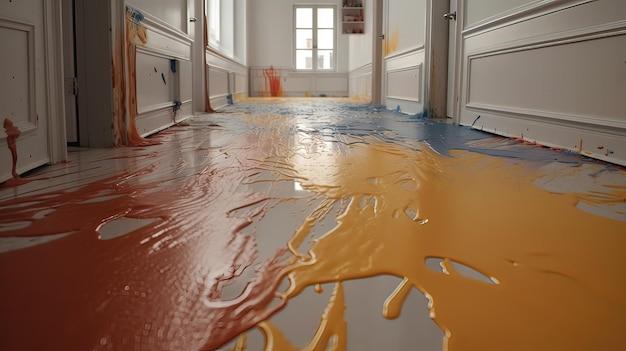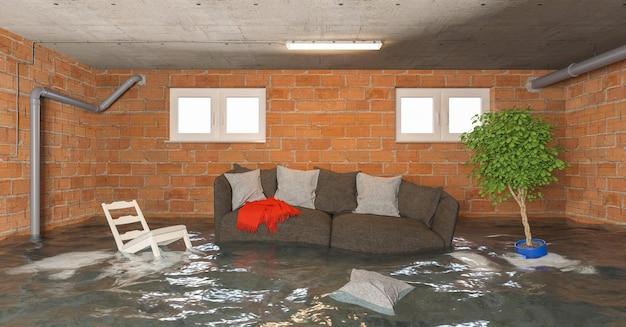Water damage is a major concern for homeowners and business owners alike. Whether it’s from a burst pipe, heavy rainfall, or a flooding river, there are numerous ways that water can wreak havoc on your property. But did you know that not all water damage is the same? In fact, there are three different categories of water damage: category 1, category 2, and category 3.
So, what exactly do these categories mean? Well, category 1 water damage is the least severe, and it typically comes from a clean source such as a broken water supply line or a sink overflow. Category 2 water damage, on the other hand, is characterized by water that contains some contamination and can come from sources such as a washing machine overflow or a toilet overflow (with no feces).
Finally, category 3 water damage is the most severe, as it contains highly contaminated water, such as sewage backflow or floodwaters. This type of water damage can be dangerous to your health and requires immediate attention.
In this blog post, we’ll dive deeper into the different categories of water damage and discuss the specific types of damage that fall under each category. We’ll also cover what you should do if you experience water damage, the dangers of leaving it untreated, and provide some tips for preventing water damage from happening in the first place. So, grab a cup of coffee and let’s get started!
Category 1 2 3 Water Damage: How to Deal with the Aftermath
Water damage comes in various types, ranging from the least harmful Category 1 to the most severe Category 3. Regardless of the type, water damage can leave a devastating aftermath in your home, posing risks to your health and the property’s structural integrity. So, if you’ve just experienced water damage in your home, worry not – you’ve come to the right place. Here’s what you need to do:
Act Fast
Time is of the essence when it comes to water damage restoration. The longer you wait to address the problem, the greater the damage will be, and the more expensive the repairs. You need to act fast to prevent mold growth, structural damage, and other related problems.
Prioritize Safety
Before you attempt to mitigate water damage in your home, take note of safety precautions. Turn off the electricity, wear protective gear, and avoid contact with contaminated water. Better still, hire a professional water damage restoration company to handle the job.
Assess the Damage
Before you begin the restoration process, assess the extent of the damage. Categorize the damage according to the water type, and check for visible signs of mold growth, structural damage, and other related problems.
Remove Water and Dry Out the Area
Using appropriate equipment such as pumps, wet vacs, and dehumidifiers, start removing any standing water in your home. Afterward, dry out the affected area and ensure that the walls, floors, and ceilings are completely dry.
Sanitize and Decontaminate
After drying out the affected area, sanitize and decontaminate all surfaces and items that have come into contact with contaminated water. You can use household bleach or other appropriate sanitizers to clean and disinfect your home.
Consider Hiring Professionals
If the water damage is extensive or poses health risks, it’s best to consider hiring professional water damage restoration services. They have the necessary expertise, equipment, and experience to handle the situation effectively.
In conclusion, water damage is a serious issue that requires prompt attention. By acting fast, prioritizing safety, assessing the damage, removing water, drying out the area, sanitizing, and decontaminating, you can mitigate the damage and prevent future problems. If you’re not confident in your ability to handle the restoration process, consider seeking help from professional water damage restoration services.
Category 1 Water Damage: What It Is and How to Prevent It
Water damage can come in many forms, and Category 1 water damage is one of the most common. Simply put, Category 1 water damage refers to water damage that is caused by clean water, such as from a broken pipe or a leaking faucet.
What Causes Category 1 Water Damage
Category 1 water damage can be caused by a variety of factors, such as:
- Burst or frozen pipes
- Leaking appliances (washing machines, dishwashers, etc.)
- Overflowing sinks or bathtubs
- Roof leaks
- Poor ventilation and high humidity
The Effects of Category 1 Water Damage
While Category 1 water damage might seem relatively harmless compared to Category 2 or 3 water damage, it can still cause significant damage if left untreated. Some potential effects of Category 1 water damage include:
- Mold growth
- Weakened structural integrity
- Staining and discoloration
- Electrical hazards
How to Prevent Category 1 Water Damage
Thankfully, there are many things you can do to prevent Category 1 water damage from occurring in your home:
- Regularly check pipes and appliances for leaks and damage
- Install a sump pump to prevent flooding
- Keep gutters and downspouts clear to prevent roof leaks
- Monitor indoor humidity levels and use a dehumidifier if needed
Taking these steps can go a long way in preventing Category 1 water damage and keeping your home safe and dry.
In summary, Category 1 water damage can be caused by clean water and can still cause significant damage if left untreated. To prevent Category 1 water damage, it’s essential to regularly check for leaks and damage, install preventative measures like sump pumps and dehumidifiers, and keep gutters and downspouts clear. With these tips in mind, you can keep your home dry and free from water damage.
Category 2 Water Examples
In the world of water damage, there are three categories: Category 1, Category 2, and Category 3. In Category 2, the water is not clean and can cause illness or discomfort if consumed or exposed to the skin. Here are some examples of Category 2 water:
Washing Machine Overflow
A common cause of Category 2 water damage is a washing machine overflow. If the machine malfunctions and sprays water all over the room, the excess water can seep into the carpet, padding, and baseboards. If left untreated, the water can lead to mold growth and further damage.
Roof Leaks
Leaks in the roof can lead to some serious water damage. During heavy rains, water can seep through the roof and into the walls, insulation, and ceiling. This type of water may contain contaminants and should be treated as Category 2 water.
Dishwasher Leakage
Another common cause of Category 2 water damage is dishwasher leakage. A leaky dishwasher can cause water to seep into your hardwood floors, tiles, and baseboards. Over time, this can lead to mold growth and cause severe damage to your house.
Flooded Basement
A flooded basement is another example of Category 2 water damage. When the water comes from inside the house, whether it’s from an overflowing toilet or sump pump failure, it’s considered Category 2. As the water contains contaminants, it’s not safe to touch without protective equipment.
In conclusion, Category 2 water damage is serious and must be dealt with quickly to prevent further damage. Common causes of Category 2 water include washing machine overflow, roof leaks, dishwasher leakage, and flooded basements. Remember to contact a professional water damage restoration company to properly assess and address the situation.
Category 3 Water Damage: The Importance of Acting Within 72 Hours
Category 3 water damage poses a severe health risk to both humans and animals. Typically caused by overflow from toilets, sewage backups, or flooding from natural disasters, this type of damage requires immediate attention and prompt action. If left unattended for even a short time, it can lead to mold and bacterial growth, resulting in expensive and time-consuming repairs.
The Critical 72-Hour Window
The first 72 hours following a category 3 water damage incident are critical. During this time, the moisture content in the affected areas can cause permanent damage to walls, wooden structures, upholstery, and carpets. If left untreated, this moisture can lead to mold and mildew growth, and even structural damage, which is more difficult to repair, and expensive. Acting fast is essential in minimizing the damage caused by category 3 water.
Importance of Taking Immediate Action
The first thing to do when dealing with category 3 water damage is to shut off the power. This will prevent accidents, especially with electrical appliances and wiring, from occurring. Next, it’s essential to contact water damage restoration professionals immediately to assess the situation and provide the appropriate solutions.
Time is of the essence, particularly when dealing with category 3 water damage. The longer you wait, the more extensive the damage, and the more expensive it will be to repair. A prompt response is crucial in preventing further damage to the property and the potential health risks posed by mold and bacteria growth.
The Restoration Process
The restoration process for category 3 water damage is more complicated than other water damage types because of the severity of the damage and health risks involved. The first step is to remove all the water and excess moisture thoroughly. Once this is done, damaged materials, such as wet carpets, must be removed and disposed of immediately.
After removing the damaged materials, cleaning and sanitizing the affected area is the next step. This includes disinfecting the area and removing any mold or mildew growth. Restoration professionals use specialized equipment, such as dehumidifiers and air movers, to dry and vent the affected space entirely.
In conclusion, water damage resulting from category 3 water is not something to take lightly. It’s essential to act fast and contact professional restoration experts to assess and restore the damage. Remember, the first 72 hours are critical in minimizing the damage and preventing further health risks. Don’t wait; act fast to prevent costly repairs and keep your family safe.
What are Category 1, 2, and 3 Water
Water damage is a common problem that can occur in any home or business, and it can have devastating consequences. There are three categories of water damage, which determine the level of contamination and the necessary restoration procedures.
Category 1 Water
Category 1 water, also known as “clean water,” is water that comes from a source that does not pose a substantial threat to human health. Examples of Category 1 water sources include broken supply lines, tub or sink overflows with no contaminants, and rainwater. In most cases, Category 1 water can be cleaned up and dried out effectively with minimal restoration procedures.
Category 2 Water
Category 2 water, also known as “gray water,” is water that contains a significant level of contamination and can cause illness or discomfort if ingested. Examples of Category 2 water sources include discharge from washing machines or dishwashers, toilet overflows with urine (no feces), and sump pump failures. Category 2 water requires more extensive restoration procedures due to its contamination level.
Category 3 Water
Category 3 water, also known as “black water,” is water that contains significant levels of pathogenic, toxigenic, or other harmful agents and can cause severe illness or death if ingested. Examples of Category 3 water sources include sewage backup, floodwaters, and any type of water that has been standing for an extended period. Category 3 water requires the most extensive restoration procedures and poses a severe health risk if not appropriately handled.
In conclusion, understanding the category of water damage is crucial in determining the appropriate restoration procedures. Always exercise caution when dealing with Category 2 or 3 water and seek professional help to ensure your safety and the effectiveness of the restoration procedures.
Overview
Water damage is a common problem that can wreak havoc on your property. It can happen in any part of your house, including the basement, roof, walls, and even the foundation. There are different types of water damage, and each one can cause different levels of destruction. In this subsection, we will explain the three categories of water damage.
Category 1 Water Damage
Category 1 water damage, also known as “clean water damage,” is the least severe type of water damage. This type of damage happens when your property is exposed to clean water sources such as broken pipes or overflowing sinks. Category 1 water damage does not pose a significant threat to human health.
However, if left unattended for long periods, category 1 water damage can lead to mold growth, which can cause allergies, respiratory problems, and other health issues. If you experience category 1 water damage, it’s crucial to hire a professional water damage restoration company to prevent further damage.
Category 2 Water Damage
Category 2 water damage, also known as “grey water damage,” is a type of water damage that contains a significant amount of contaminants, making it unsafe for human contact. This type of damage happens when water from sources like broken toilets, dishwasher leaks, and washing machine overflow mixes with chemicals or other contaminants.
The contaminants in category 2 water damage can cause severe health problems such as diarrhea, vomiting, nausea, and skin irritation. If you experience this type of water damage, it’s essential to hire a professional restoration company to help clean up the debris and prevent further damage.
Category 3 Water Damage
Category 3 water damage, also known as “black water damage,” is the most severe and dangerous type of water damage. This type of damage happens when floodwaters, sewage, or standing water that has been left for an extended period of time contaminates your home.
Category 3 water damage often carries harmful bacteria and viruses that cause serious health problems such as hepatitis, cholera, and E. coli infections. If you suspect that you have category 3 water damage, do not attempt to clean up the debris yourself. Contact a professional restoration company immediately.
Water damage can occur at any time and can cause significant damage to your home. It’s crucial to understand the different types of water damage to take appropriate action when the need arises. Category 1 water damage is the least severe, while category 3 water damage is the most dangerous. Always contact a professional restoration company for help when dealing with water damage to ensure your home is clean, safe, and free of bacteria or viruses.



